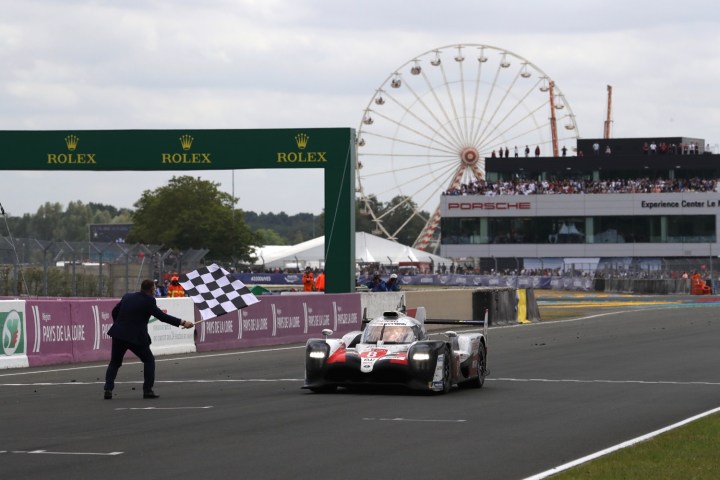
It’s amazing how quickly things can change.
For decades, Toyota just couldn’t catch a break at the 24 Hours of Le Mans. Victory in the French race is one of the most prestigious prizes in motor sports, but Japan’s largest automaker just couldn’t nab it. Then Audi and Porsche withdrew from the top LMP1 hybrid class, leaving the path to a win open. Toyota duly scored its first victory in 2018, and just repeated the feat with a dominant one-two finish at the 2019 24 Hours of Le Mans — making it the only Japanese automaker with two Le Mans wins.
As the only team in the top class, Toyota was the odds-on favorite to win the 2019 race. Assuming its two TS050 hybrids didn’t experience any mechanical issues (always a possibility over 24 hours of racing) the question was which car would cross the finish line first. The answer was the number 8 Toyota, driven by Fernando Alonso, Sebastien Buemi, and Kazuki Nakajima — the same trio that one the 2018 race. Alonso is a two-time Formula One world champion who is exploring other forms of racing after several fallow years in F1. He hopes to become only the second driver to win racing’s unofficial “triple crown,” encompassing Le Mans, the Monaco Grand Prix, and the Indianapolis 500. Only the latter box remains unchecked for the Spaniard.
The result wasn’t without controversy. Toward the end of the race, the number 7 Toyota of Mike Conway, Kamui Kobayashi, and José María López was in the lead. On lap 367 of 385, a sensor indicated a punctured tire. But the sensor was faulty, and when the car pulled into the pits, the wrong tire was changed, according to Toyota. That was enough to rob Conway, Kobayashi, and López of the win.
Le Mans includes a mix of purpose-built race cars — called prototypes — and cars based on production models. The latter field offered plenty of drama. Ford was hoping for one last win before retiring its GT, while BMW hoped the last Le Mans for its M8 would also yield a first win. Aston Martin unleashed its Vantage on the 60th anniversary of its only Le Mans win. Corvette Racing’s 20th straight appearance at Le Mans was likely the last for the current front-engine ‘Vette, which will soon be replaced with a radically different mid-engine model. A win for any of those teams would have been a great story, but in the end a Ferrari 488 entered by AF Corse beat them all to take the GTE Pro class win. The privately-entered number 85 Ford GT did finish highest in the lower-level GTE Am class, providing some temporary consolation to the Blue Oval. But the car was later disqualified for not meeting the minimum refueling time specified in the regulations. Talk about sweating the small stuff.
The 2019 24 Hours of Le Mans marks the end of an era. It was the last year the race was headlined by LMP1 hybrids like the Toyota TS050. The cars were impressive technological achievements, but ultimately proved too expensive to be sustainable. Toyota has been the only team competing in the top class for the past two years, and while rule makers have tried to close the gap between the TS050s and lower-level privateer cars, the Japanese automaker has still had a major advantage. Toyota went from being an also ran to being virtually unbeatable — which makes for boring racing.
Beginning in 2020, the top class at Le Mans will run under new “hypercar” rules, designed to encourage manufacturers to race their fastest road cars. Toyota plans to continue racing under the new format, while Aston Martin will bring its Valkyrie hypercar to the party. Will that be enough to rejuvenate one of the oldest spectacles in racing?
Updated on June 17, 2019: Added confirmation of the number 85 Ford GT’s disqualification.


